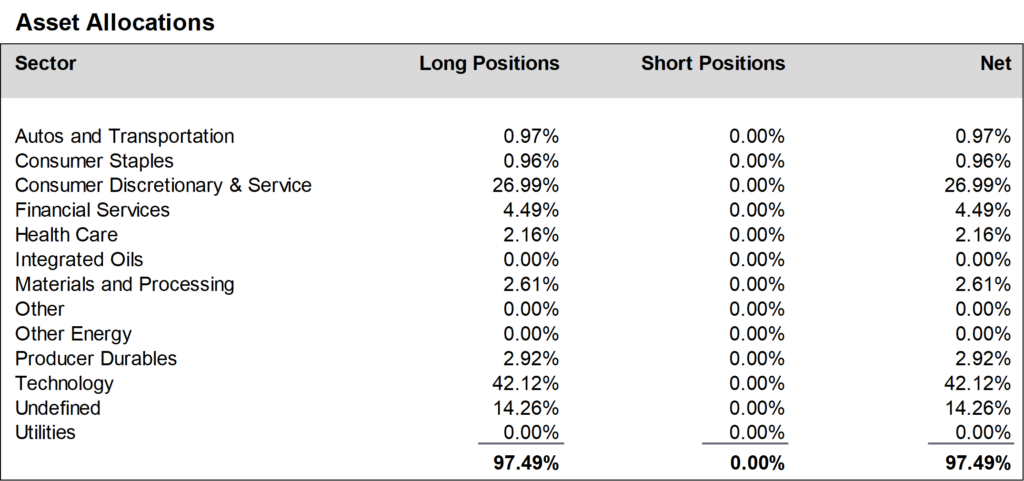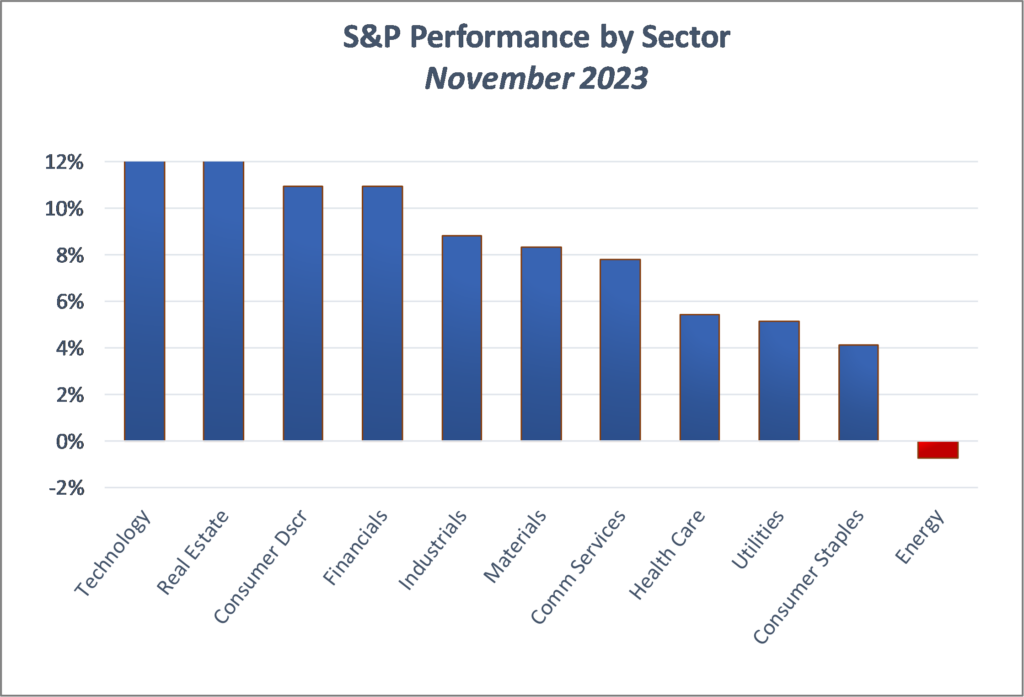
Ocean Park Capital Management
2503 Main Street
Santa Monica, CA 90405
Main: 310.392.7300
Daily Performance Line: 310.281.8577
Stock Indices:
| Dow Jones | 39,807 |
| S&P 500 | 5,254 |
| Nasdaq | 16,379 |
Bond Sector Yields:
| 2 Yr Treasury | 4.59% |
| 10 Yr Treasury | 4.20% |
| 10 Yr Municipal | 2.52% |
| High Yield | 7.44% |
YTD Market Returns:
| Dow Jones | 5.62% |
| S&P 500 | 10.16% |
| Nasdaq | 9.11% |
| MSCI-EAFE | 5.06% |
| MSCI-Europe | 4.60% |
| MSCI-Pacific | 5.82% |
| MSCI-Emg Mkt | 1.90% |
| US Agg Bond | -0.78% |
| US Corp Bond | -0.40% |
| US Gov’t Bond | -0.72% |
Commodity Prices:
| Gold | 2,254 |
| Silver | 25.10 |
| Oil (WTI) | 83.12 |
Currencies:
| Dollar / Euro | 1.08 |
| Dollar / Pound | 1.26 |
| Yen / Dollar | 151.35 |
| Canadian /Dollar | 0.73 |
Portfolio Overview
Ocean Park Investors Fund gained 9.24%* in November, while the S&P 500 gained 8.92% and the NASDAQ Composite gained 10.70%. Portfolio holdings in technology stocks led the way, with standouts including Palo Alto Networks (up 21%), Advanced Micro Devices (up 23%), Salesforce (up 25%), and Crowdstrike (up 34%).
During the month, we reduced positions in the health care and consumer discretionary sectors and increased exposure to the technology sector and the QQQ ETF. About half of our stocks reported earnings in November, and most of those reports were strong. We closed several positions ahead of (or after) reporting disappointing earnings, including Deere, Emerson Electric, Ulta Beauty, and Walmart. We replaced them with stocks with a likelihood of good earnings and positive guidance such as Intuit, TJX, and Xylem. We finished the month at about 97% net long, unchanged from October.
Daily updates on our activity are available on our Results Line, at 310-281-8577, and current information is also maintained on our website at www.oceanparkcapital.com. To gain access to the site enter password opcap.
*These results are pro forma. Actual results for most investors will vary. See additional disclosures on page 4. Past performance does not guarantee future results.




